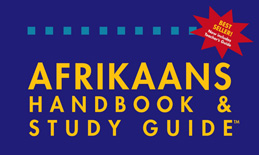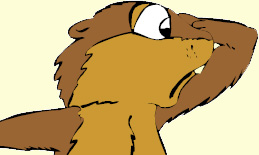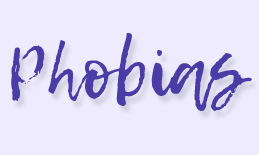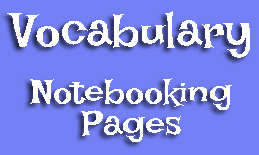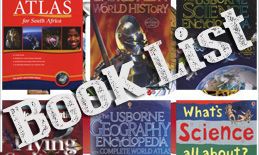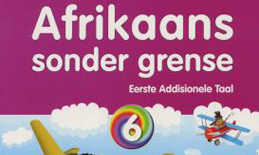I created an “Afrikaans Extras” book to help kids learn Afrikaans as second language.
The idea behind it was to have a collection of sounds, words and expressions so that the child doesn’t have to go find it somewhere in a textbook of some sort when he/she wants/needs to do some revision.
We used a similar book in Buck’s Grade 5 year, but I’ve expanded it a little for Grade 6. What we do is as we work through the Afrikaans Sonder Grense textbook, I let Buck write the words printed in bold in his book on the correct page (under the appropriate sound/letter). We also use the book as follows:
- On the Punctuation (Leestekens) page, I let him record any word that has symbols (e.g. sê, oë)
- On the Plurals and Diminutives (Meervoude en Verkleiningsvorme) page, I let him draw a picture of the word, and then write the plural and diminutive of the word in its appropriate column (e.g. bok, bokke, bokkie)
- The Degrees of Comparison (Trappe van Vergelyking) page is self-explanatory, but I let him write the positive, comparative and superlative words in their respective columns (e.g. kort, korter, kortste)
- On the (Intensiewe Vorm) page I let him write the word in the first column, and the intensive in the second (e.g. Geel -> Goudgeel)
- On the Genders (Manlik en Vroulik) page I let him draw a picture and write the name of the animal under his picture. Then he writes the male and female, as well as the baby of each in their respective columns (e.g. Under his picture of a sheep he would write Skaap, then Ram, Ooi and Lam)
- On the Abbreviations (Afkortings) page, I let him write the word and then its abbreviation in their respective columns (e.g. Meneer -> Mnr.)
- On the Contractions (Verkortings) page, I let him write the words and their contractions in their respective columns (e.g. Dit is -> Dis)
- Samestellings are Compound words. I let him write the two words that make up the word, and then the new word (e.g. swem + broek = swembroek)
- Afleidings are Derivatives. I let him write the base word and the pre- or suffix, and then the complete word (e.g. ge + hardloop = gehardloop)
- On the pages for prepositions (Voorsetsels), proper names (Eiename), pronouns (Voornaamwoorde), mass nouns (Massa Naamwoorde) I just let him list them as he completes the exercises
- Synonyms and Antonyms (Sinonieme/Antonieme) work on the same principle: I let him write the word in the first column, and the synonym/antonym in the second column
- On the Syllables page (Lettergrepe), I let him write the word first, then break it up in syllables (in the second column)
- On the Collective Nouns (Versamelname) pages, I let him draw a small group of whatever animal we want to record, and then he writes the collective noun under it (sometimes he circles his group too)
- On the Homophone, Homonym and Ordinal Number pages (Homofone/Homonieme/Rangtelwoorde), I let him draw pictures and write the words underneath
- On the Idioms pages (Idiome), I let him write down the idiom in a block (he can select one), and then draw a picture that fits
- On the Rhyme words (Rymwoorde) pages I just let him write rhyming word couples
I have made provision in the book for enough space to cover the whole year’s words and expressions. The book also has an index page which the child can use to easily find the relevant page. (This book can also be used for Grade 4/5 Afrikaans, and continued on into the Grade 6 year).
I then bound all the pages in a nice little book.
Print the pages back to back, then be creative with a cover…
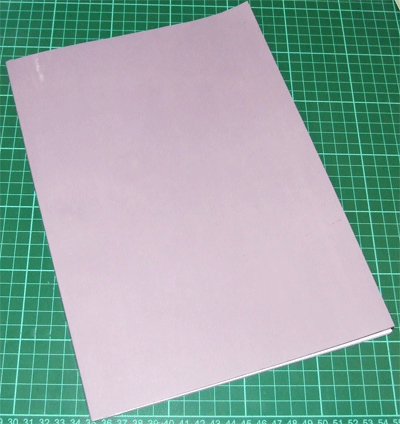
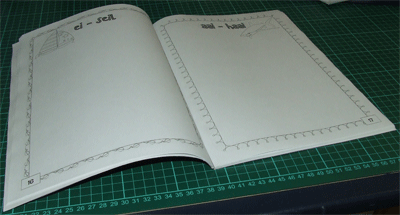
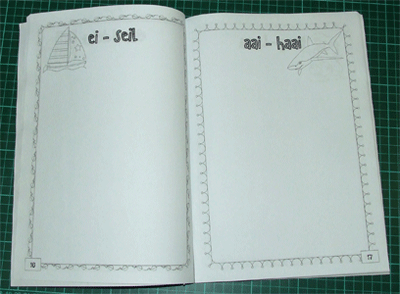
You can download some lesson plans and an outline for Grade 6 curriculum here.

